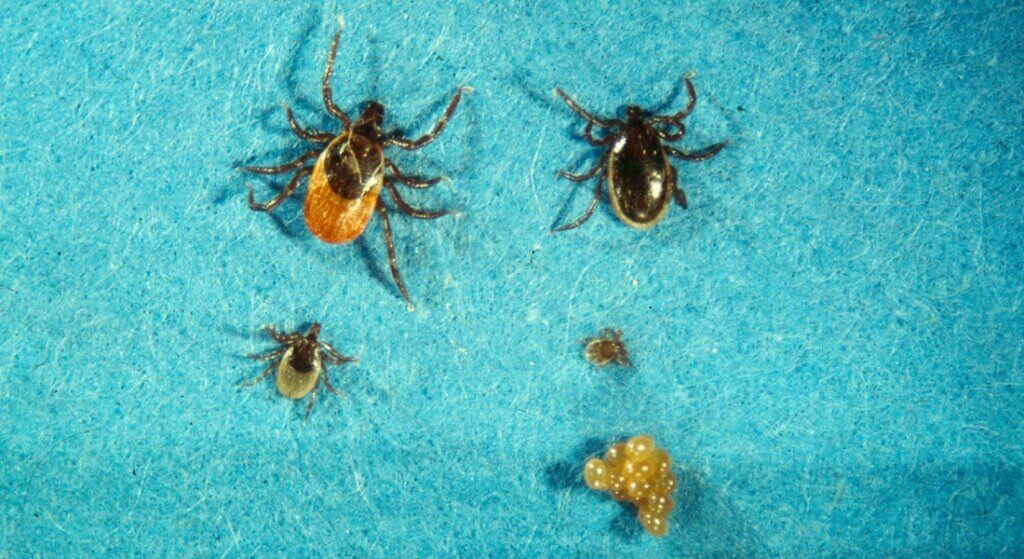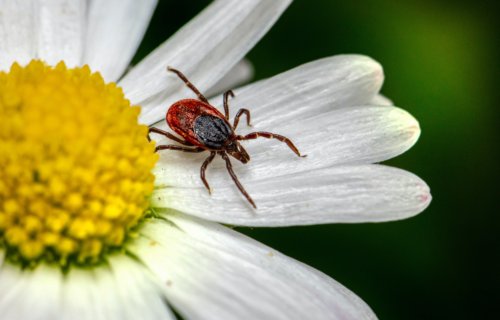NEW HAVEN, Conn. — Many U.S. regions have experienced unprecedented increases in the rate of local tick-borne diseases over the past five decades. Now, scientists at Yale University are finally ringing the alarm bell, so to speak, warning that this worrying trend is a “tick-ing” public health time bomb that looks to only be worsening as more time goes on. Moreover, the research team believes a number of new, innovative solutions are necessary to conquer this big problem lurking inside these tiny insects.
Possible solutions outlined by this latest report include a new class of vaccines for humans (some of which are already in development), as well as vaccines for animals typically known to carry disease-spreading ticks.
All in all, the message researchers bring is anything but a good one. They say the public health threat posed by ticks and the diseases they carry is escalating at an absolutely rapid pace. The very threat posed by tick-borne diseases wasn’t even formally recognized until 1982 when a bacterium transmitted by ticks caused an outbreak of arthritis-like symptoms in children in Lyme, Connecticut. Even after that, though, known cases of the disease were extremely rare.
Fast forward to today, and an estimated 490,000 people in the United States are infected annually by tick-borne diseases like Lyme disease. This incredible increase, researchers say, has largely been caused by the return of formerly depleted forests and a major increase in populations of tick-hosting white-tailed deer.
This new tick threat has also spread throughout the country in a major way over the past decades. Once confined to isolated areas near the New England coastline, today Lyme disease is present in the U.S. Midwest and many other parts of the country. Notably, a single tick species (Ixodes scapularis), commonly referred to as the black-legged or deer tick, accounts for 97 percent of tick-borne diseases in the United States.
Most current efforts aimed at combatting tick-borne diseases have concentrated on developing vaccines that target Borrelia burgdorferi, the bacterium that drives Lyme disease. Such efforts, unfortunately, have yielded limited successes, and also offer no means of stopping other pathogens that can be transmitted by ticks.
For instance, deer ticks can also transmit six other human pathogens. One such example is the Powassan virus, named after the town where it was first identified in a young boy who eventually died from it. That virus usually kills 10 percent of those infected with it and causes permanent neurological damage among half of infected patients. While still rare today, even Powassan cases have increased forty-fold in the last two decades.

The research team behind this work was led by Sukanya Narasimhan, associate professor in Yale’s Department of Internal Medicine (Infectious Diseases) and Erol Fikrig, Waldemar Von Zedtwitz Professor of Medicine (Infectious Diseases) and professor of epidemiology (microbial diseases) and of microbial pathogenesis.
In response to these major health issues, Fikrig’s lab at Yale is working now to develop vaccines capable of fighting off a variety of infections by thwarting the ability of ticks to feed, and even alert human hosts when they’ve been bitten by a tick.
“If we can keep ticks from feeding, we can control Lyme and other diseases as well,” says Narasimhan, first author of the new report, in a university release.
Prior studies reveal that multiple exposures to tick bites can increase resistance to tick-borne infections. Fikrig’s lab looked to capitalize on that insight. In a previous study, the lab showed that a vaccine containing a cocktail of tick salivary proteins can impair tick feeding and even increase the chances that a person will recognize that they’ve been bitten, ideally leading to rapid tick removal and a subsequent reduced likelihood of infection.
Durland Fish, professor emeritus of epidemiology (microbial diseases) at Yale School of Public Health and a co-author of this study, believes that such a vaccine could also be delivered orally within bait consumed by wild deer. Ideally, he notes, ticks would then be unable to feed on the blood of that deer, in turn reducing tick populations and the risk of disease spreading to humans.
“Deer are the keystone host for deer ticks,” Fish adds. “They do not exist in areas where there are no deer. I think this should be the Manhattan Project for tick-borne diseases.”
Similar approaches have already been employed to prevent raccoon rabies in the United States, stop fox rabies in Europe, and protect cattle against tick-borne disease.
“Toward this goal, we must have a multidisciplinary, One Health approach [an integrated approach that balances the health of humans, animals, and ecosystems] that will harness the vision of molecular biologists, entomologists, ecologists, epidemiologists, physicians, veterinarians and vaccinologists,” study authors conclude.
The study is published in the journal Science Translational Medicine.
You might also be interested in:
- Fact vs. Fiction: Doctors Unpack Truth About Ticks & Lyme Disease
- Best Insecticide: Top 5 Bug Repellents Most Recommended By Experts
- More than just Lyme: What to know about tick-borne diseases in America

